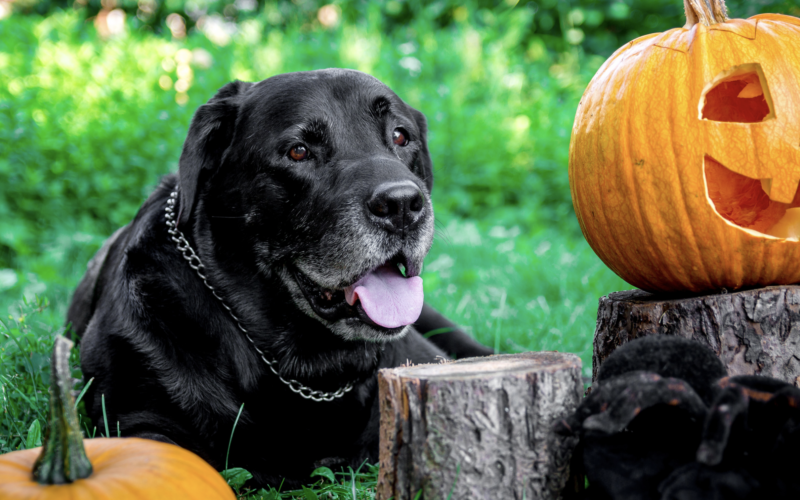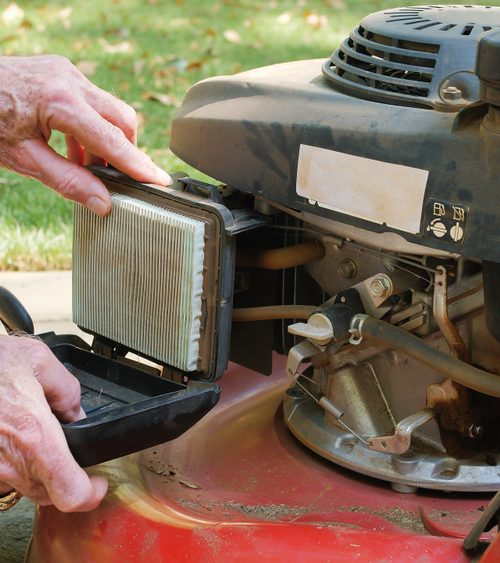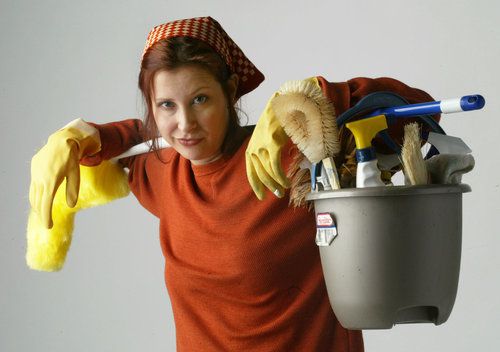By Jennifer Aldrich | BHG.Com
Troy Warren for CNT #HomeGarden
Take these simple steps to ensure your dog or cat keeps calm and stays happy on October 31.
For people of all ages, Halloween is a fun, relatively stress-free holiday. Kids, of course, love dressing up in their costumes and collecting their favorite candy. Adults enjoy decorating their homes with seasonal decor and sneaking a treat from their kids’ stash. However, October 31 isn’t a good time for everyone—it can be incredibly stressful for pets. All the excitement, noise, lights, and toxic food can be dangerous and scary for your four-legged friend. Fortunately, there are several simple things you can do to make the holiday safer and more enjoyable for everyone. Here’s what you need to know.
1. Move Candy Out of Reach
Chocolate is an obvious no-no for pets, but xylitol, a sweetener often found in gum and sugar-free candies, can cause severe liver damage to both dogs and cats if ingested. Even if you’ve gobbled up every last bit of your tasty treats, empty candy wrappers can also pose a choking hazard. To protect your pets during trick-or-treat season, store Halloween candy in a spot your pets can’t reach and make sure kids are aware that they shouldn’t share candy with their furry family members.
2. Designate a Quiet Room
With the door always opening and closing for trick-or-treaters, your pet will have plenty of opportunities to escape. (Although you might not have any due to the pandemic this year, this is a critical step to keep in mind for the future.) Keep your cat or dog in a quiet room of the house away from the front door, such as the laundry room or a guest bedroom, and give them a treat or toy to distract them from the commotion. Consider adding white noise, such as a TV, music, a fan, or even a white noise machine ($22, Walmart). White noise can help drown out the sounds of voices or the doorbell ringing that may distract pets who are easily over-excited by visitors. Be sure that your pet has his or her collar and tags on for the big night, just in case; microchipping is a vital way to ensure identification of your dog or cat if his collar comes off. Consider talking to your vet about the options before Halloween if your pet isn’t microchipped.
3. Keep Pets Indoors
Although some pets may be used to spending evenings playing in the yard, we recommend keeping them indoors on Halloween night. With so many unfamiliar people in the neighborhood for trick-or-treating, pets are more vulnerable. Even if you have a gated yard, children may open the gate to pet a cute dog, and forget to close it. The unusual amount of visitors may frighten your pet, too—an ordinarily docile dog may be afraid by costumed children or masked strangers and could bite out of fear or an attempt to protect you from these mysterious intruders.
4. Don’t Force Costumes
There’s nothing cuter than a cat in a costume, but some pets dislike wearing them. If you want your pet to wear their bee wings happily, introduce the outfit before Halloween rolls around. Let them get comfortable wearing it for short periods and reward them with treats to build a positive association. Make sure any costumes fit right and don’t block their vision, hearing, or ability to breathe, and remove any small parts that could be chewed off. Even after adjusting to a costume, your pet might still show signs of being uncomfortable wearing something unfamiliar. A festive Halloween bandana ($5, Target) is an easy, safe way to get in the spirit if your pet won’t tolerate a costume.
5. Detox Your Decor
While some Halloween safety tips may seem obvious, you may not have considered the dangers your decor could pose. When prepping your home for the Halloween season, beware of decor items that can be dangerous to pets, and watch out for things like candles and lit jack-o’-lanterns that could burn your pet. If you choose to decorate with flashing decorations or string lights, make sure to move any cords out of reach of curious claws. When it comes time for Halloween parties or trick-or-treating, watch out for small accessories, like plastic spiders or fake eyeballs, that may fall off costumes or travel indoors with small children. These unfamiliar objects will spark your pet’s interest and could cause a choking hazard.
In Other NEWS



































